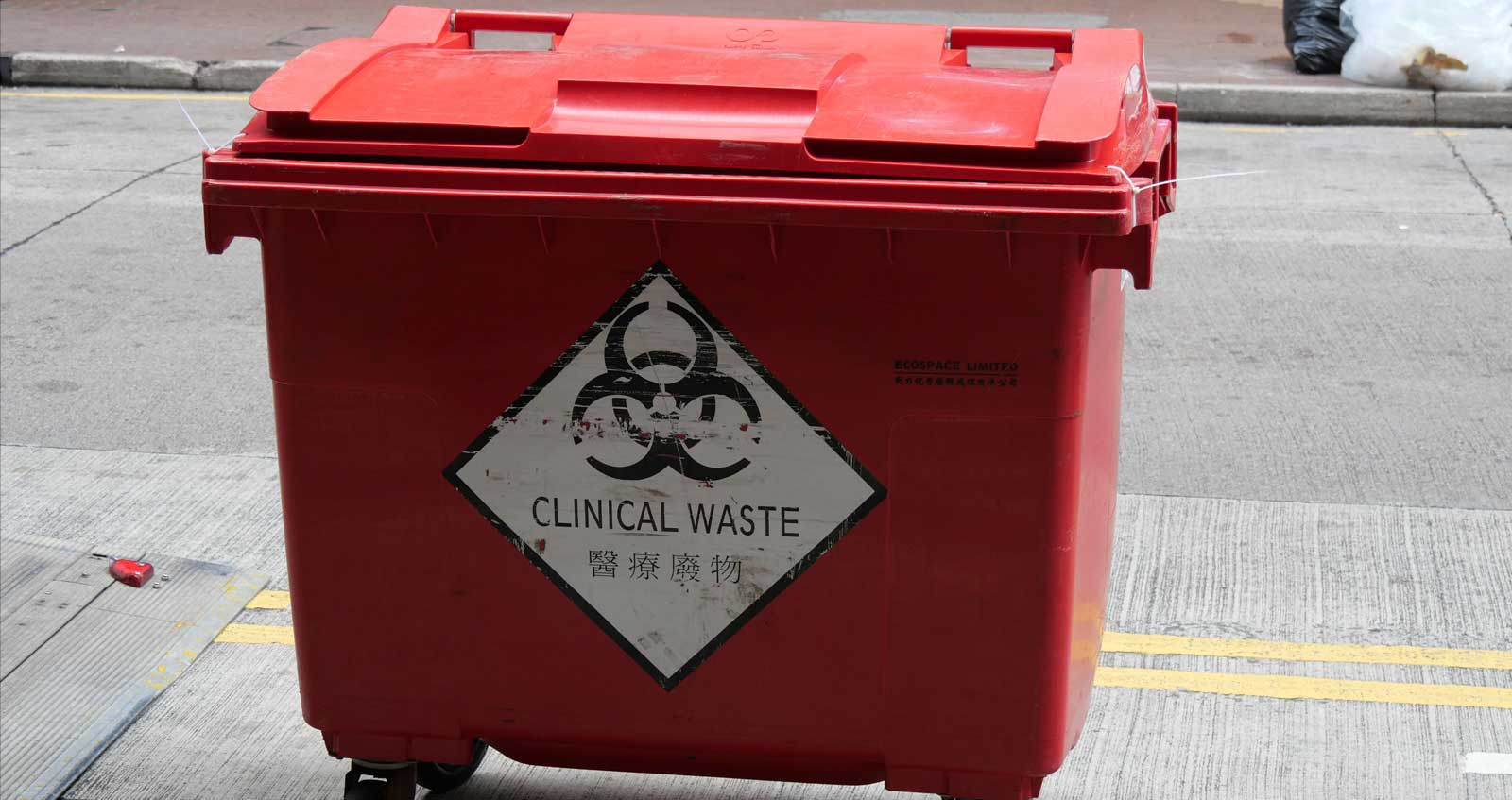Understanding the Different Sorts Of Waste Disposal Techniques
In the realm of waste monitoring, the range of disposal methods offered today is large and varied, each method serving a distinctive objective in resolving the obstacle of garbage disposal. click here. From reusing approaches that aim to give brand-new life to materials, to the elaborate processes of contaminated materials monitoring, the landscape of garbage disposal is complex yet critical for ecological sustainability. Comprehending the nuances of these various techniques not only clarifies the significance of accountable waste management however also motivates us to reassess our approach towards waste disposal in a swiftly developing world

Recycling Approaches
Reusing methods are critical for lasting waste administration practices in both residential and commercial setups. medical waste disposal. By executing efficient recycling techniques, a substantial amount of waste can be drawn away from land fills, saving natural sources and reducing the ecological impact of manufacturing procedures
In houses, curbside recycling programs play a crucial duty in motivating households to different recyclable materials from basic waste. Products such as paper, plastics, glass, and metals can be sorted and gathered for handling into brand-new items, decreasing the requirement for basic materials and energy-intensive manufacturing procedures.
Industrial facilities additionally depend on reusing methods to minimize waste generation and promote a circular economic situation. By carrying out closed-loop systems, businesses can reuse materials within their production procedures, lowering expenses and environmental footprint. medical waste removal. Furthermore, commercial recycling programs commonly involve partnerships with specialized recycling facilities to guarantee that products are effectively sorted, refined, and rehabilitated right into the supply chain
Composting Methods

Aerated static pile composting entails mixing natural waste products in a big pile and regularly turning it to ensure proper aeration. This method is efficient for large composting procedures. On the other hand, vermicomposting uses earthworms to damage down raw material right into nutrient-rich spreadings. This technique is well-suited for smaller-scale procedures and houses.
In-vessel composting involves positioning natural waste in a shut container with regulated problems for temperature level and oygenation. This technique is effective for taking care of food waste in metropolitan locations. Lastly, windrow composting consists of creating long rows of organic waste and regularly transforming them to advertise decay. This method is commonly utilized in farming setups.
Land Fill Disposal
Landfill disposal is a typically used approach for managing waste that can not be recycled or composted. It includes burying waste in assigned areas of land, with appropriate precautions to avoid ecological contamination. Land fills are crafted centers developed to separate waste from the surrounding setting. The waste is compacted and covered with soil everyday to lower smells, discourage insects, and minimize the spread of trash. Modern landfills are geared up with protective liners and monitoring systems to stop leakage of unsafe materials into the dirt and groundwater. Methane gas, a result of disintegrating organic waste in landfills, is frequently accumulated and utilized as a resource of renewable resource. Despite advancements in land fill technology, worries stay concerning the long-lasting environmental impacts, such as groundwater contamination and greenhouse gas emissions. Efforts to lower reliance on landfills include promoting waste decrease, recycling, and exploring alternative waste disposal approaches to minimize the environmental impact connected with typical landfill disposal methods.

Waste-to-Energy Incineration
Incineration of waste for power generation is a click here technique increasingly being thought about as an alternative to standard land fill disposal methods. Waste-to-energy incineration involves the combustion of waste products at high temperature levels, generally in specialized centers developed to generate electrical power or warmth through the procedure - click here. This method not only lowers the volume of waste that would certainly or else be destined for landfills but also utilizes the heat generated throughout incineration to produce energy
Among the crucial advantages of waste-to-energy incineration is its capacity to generate electrical energy while minimizing the environmental influence compared to standard land fill disposal techniques. By transforming waste into power, this strategy helps in minimizing greenhouse gas exhausts and reliance on fossil gas for power generation. Additionally, waste-to-energy facilities are outfitted with advanced air pollution control innovations to mitigate possible toxic wastes released throughout the combustion process.
Contaminated Materials Monitoring

Thinking about the essential significance of responsible waste management practices, specifically in the realm of ecological sustainability, the focus now changes in the direction of the elaborate domain name of Contaminated materials Administration. Unsafe waste presents significant dangers to both human health and wellness and the setting, necessitating specialized handling and disposal strategies. Usual instances of contaminated materials include chemicals, batteries, chemicals, and digital waste.
Hazardous Waste Monitoring entails the identification, collection, transportation, therapy, and disposal of products deemed unsafe or potentially hazardous. This process needs adherence to stringent regulations and guidelines to minimize unfavorable influences on ecological communities and public wellness. Different methods are used in managing contaminated materials, including recycling, safe and secure garbage dumps, encapsulation, and chemical treatment.
Correct Contaminated Materials Monitoring is important for stopping contamination of soil, water sources, and air pollution. It is essential for sectors, laboratories, medical care facilities, and various other generators of contaminated materials to execute robust management methods, training programs, and emergency situation feedback prepares to make sure the safe handling and disposal of these products. Failure to handle dangerous waste properly can have significant repercussions, underscoring the value of responsible and attentive methods in this area.
Verdict
In verdict, waste disposal techniques play a vital function in handling and minimizing the impact of waste on the environment. It is important for industries and people to recognize the different waste disposal methods offered and pick the most ideal technique for sustainable waste administration.
In the realm of waste management, the selection of disposal methods offered today is substantial and varied, each approach offering a distinct function in dealing with the difficulty of waste disposal. click here. From reusing approaches that aim to provide new life to products, to the intricate procedures of harmful waste administration, the landscape of waste disposal is complicated yet important for environmental sustainability. Comprehending the subtleties of these different strategies not just loses light on the importance of accountable waste administration however likewise motivates us to reassess our approach towards waste disposal in a rapidly advancing world
Efforts to lower reliance on land fills consist of promoting waste reduction, reusing, and exploring alternate waste disposal methods to lessen the ecological impact linked with typical landfill disposal practices.
It is essential for individuals and markets to recognize the various waste disposal methods available and choose the most suitable technique for lasting waste monitoring.